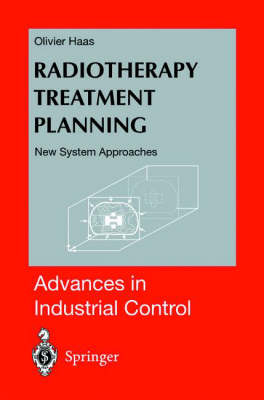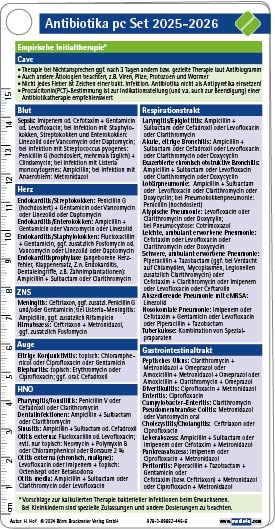
Radiotherapy Treatment Planning
Springer London Ltd (Verlag)
9781852330637 (ISBN)
- Titel ist leider vergriffen;
keine Neuauflage - Artikel merken
1. Introduction and Brief Review of Developments in Radiotherapy.- 1.1 Introduction.- 1.2 Historical Review of Developments in Radiotherapy.- 1.2.1 The Early Workers.- 1.2.2 Effect of Radiation on Human Tissues.- 1.2.3 Improving the Physical Selectivity of Treatments.- 1.2.4 Developments of Megavoltage X-ray Machines.- 1.3 Radiotherapy Treatment Planning Procedures.- 1.3.1 Conventional Radiotherapy Procedures.- 1.3.2 Radiotherapy Treatment Planning.- 1.3.3 Automated Treatment Planning: Review of the Developments.- 1.3.4 Beam Compensation Techniques.- 1.4 Background to the Optimisation of Radiotherapy Treatment Plans.- 1.4.1 Traditional Approach to Manual Optimisation.- 1.4.2 Consideration of Region of Interest.- 1.4.3 Notion of Objective Function.- 1.4.4 Objective Based Dose Criteria.- 1.5 Optimisation in Radiotherapy: A Brief Review.- 1.5.1 Optimisation of Coplanar Beam Orientation.- 1.5.2 Optimisation of Beam Weight and Wedge Angle.- 1.5.3 Optimisation Method for in Field Intensity Modulation.- 1.5.4 Need for a Matrix Based Beam Model.- 1.5.5 Proposed Hybrid Approach.- 1.6 Concluding remarks.- 2. Beam Characteristics and Preliminary Modelling Considerations.- 2.1 Introduction.- 2.2 Need for an Appropriate Model Structure.- 2.3 Preliminary Physical Consideration.- 2.4 Typical Beam Characteristics.- 2.4.1 Photon Beam Central Axis Characteristics.- 2.4.2 In-Air-Profile.- 2.4.3 The Penumbra.- 2.4.4 Interaction of Photons with Matter.- 2.4.5 Influence of Inhomogeneities.- 2.5 Concept of Primary Modelling and Scatter Phenomenon.- 2.5.1 Primary Component.- 2.5.2 Forward Scatter Phenomenon.- 2.5.3 Determination of the Coefficient ?.- 2.6 Concluding Remarks.- 3. Formulation of Matrix Based Beam Model.- 3.1 Introduction.- 3.2 Parallel Pencil Beam Model Formulation.- 3.2.1 The Parallel Matrix Grid.- 3.2.2 Beam Dose Matrix.- 3.2.3 Primary Dose Calculation Matrix.- 3.2.4 Scatter Dose Calculation Matrix.- 3.3 Divergent Pencil Beam Matrix Formulation.- 3.3.1 Divergent Pencil Beam Matrix Grid.- 3.3.2 Overall Divergent Dose Calculation Matrix.- 3.4 Inclusion of In-Air-Profile, Penumbra and Patient Contour Correction.- 3.4.1 Inclusion of IAP.- 3.4.2 Inclusion of Patient Contour Correction.- 3.4.3 Inclusion of the Penumbra.- 3.4.4 General Formulation of the Matrix Based Beam Model.- 3.5 Verification and Tuning of Developed Beam Model.- 3.5.1 Open Field Tests.- 3.5.2 Intensity Modulated Beams.- 3.6 Concluding Remarks.- 4. Solving the Inverse Problem in Radiotherapy Treatment Planning.- 4.1 Introduction.- 4.2 Definition of the Inverse Problem.- 4.2.1 Brief Review of Previous Approaches.- 4.2.2 Inverse Problem - Preliminaries.- 4.3 Formulating the Inverse Problem for Matrix Based Beam Model.- 4.3.1 Derivation of ILS for a Single Beam.- 4.3.2 Multiple Beam Formulation.- 4.3.3 Assessment of the ILS Algorithm on Standard Test Cases.- 4.3.4 Introduction of Constraints on the IMBs.- 4.4 Articulation of the Objectives.- 4.4.1 Weighted Sum of the Objectives.- 4.4.2 Adaptive Objective Weighting.- 4.5 Improving the Rate of Convergence of the Algorithm.- 4.6 Simulation Studies.- 4.6.1 Influence of the Initial Conditions.- 4.6.2 Compensating for Inhomogeneities.- 4.7 Concluding remarks.- 5. Hybrid Genetic Algorithms Applied to Radiotherapy Treatment Planning.- 5.1 Introduction.- 5.1.1 Guided Random Search.- 5.2 Genetic Algorithms.- 5.2.1 Simple GA.- 5.2.2 Hybridising GAs.- 5.2.3 Multi-Objective Approach.- 5.3 Multi-Objective Genetic Algorithms.- 5.3.1 Pareto Ranking.- 5.3.2 Selection Methods.- 5.3.3 Diagramatic Representation.- 5.4 Optimisation of Coplanar Beam Orientation in Radiotherapy.- 5.4.1 Brief Review of Existing Approaches - Orientation.- 5.4.2 Motivation for the Geometrical Approach.- 5.4.3 Geometrical Formulation: Preliminaries.- 5.4.4 Formulation of the Objectives - Orientation.- 5.4.5 Coding Considerations - Orientation.- 5.4.6 Hybridisation by Inclusion of Problem Specific Search Operators.- 5.4.7 Simulation Studies -1. Introduction and Brief Review of Developments in Radiotherapy.- 1.1 Introduction.- 1.2 Historical Review of Developments in Radiotherapy.- 1.2.1 The Early Workers.- 1.2.2 Effect of Radiation on Human Tissues.- 1.2.3 Improving the Physical Selectivity of Treatments.- 1.2.4 Developments of Megavoltage X-ray Machines.- 1.3 Radiotherapy Treatment Planning Procedures.- 1.3.1 Conventional Radiotherapy Procedures.- 1.3.2 Radiotherapy Treatment Planning.- 1.3.3 Automated Treatment Planning: Review of the Developments.- 1.3.4 Beam Compensation Techniques.- 1.4 Background to the Optimisation of Radiotherapy Treatment Plans.- 1.4.1 Traditional Approach to Manual Optimisation.- 1.4.2 Consideration of Region of Interest.- 1.4.3 Notion of Objective Function.- 1.4.4 Objective Based Dose Criteria.- 1.5 Optimisation in Radiotherapy: A Brief Review.- 1.5.1 Optimisation of Coplanar Beam Orientation.- 1.5.2 Optimisation of Beam Weight and Wedge Angle.- 1.5.3 Optimisation Method for in Field Intensity Modulation.- 1.5.4 Need for a Matrix Based Beam Model.- 1.5.5 Proposed Hybrid Approach.- 1.6 Concluding remarks.- 2. Beam Characteristics and Preliminary Modelling Considerations.- 2.1 Introduction.- 2.2 Need for an Appropriate Model Structure.- 2.3 Preliminary Physical Consideration.- 2.4 Typical Beam Characteristics.- 2.4.1 Photon Beam Central Axis Characteristics.- 2.4.2 In-Air-Profile.- 2.4.3 The Penumbra.- 2.4.4 Interaction of Photons with Matter.- 2.4.5 Influence of Inhomogeneities.- 2.5 Concept of Primary Modelling and Scatter Phenomenon.- 2.5.1 Primary Component.- 2.5.2 Forward Scatter Phenomenon.- 2.5.3 Determination of the Coefficient ?.- 2.6 Concluding Remarks.- 3. Formulation of Matrix Based Beam Model.- 3.1 Introduction.- 3.2 Parallel Pencil Beam Model Formulation.- 3.2.1 The Parallel Matrix Grid.- 3.2.2 Beam Dose Matrix.- 3.2.3 Primary Dose Calculation Matrix.- 3.2.4 Scatter Dose Calculation Matrix.- 3.3 Divergent Pencil Beam Matrix Formulation.- 3.3.1 Divergent Pencil Beam Matrix Grid.- 3.3.2 Overall Divergent Dose Calculation Matrix.- 3.4 Inclusion of In-Air-Profile, Penumbra and Patient Contour Correction.- 3.4.1 Inclusion of IAP.- 3.4.2 Inclusion of Patient Contour Correction.- 3.4.3 Inclusion of the Penumbra.- 3.4.4 General Formulation of the Matrix Based Beam Model.- 3.5 Verification and Tuning of Developed Beam Model.- 3.5.1 Open Field Tests.- 3.5.2 Intensity Modulated Beams.- 3.6 Concluding Remarks.- 4. Solving the Inverse Problem in Radiotherapy Treatment Planning.- 4.1 Introduction.- 4.2 Definition of the Inverse Problem.- 4.2.1 Brief Review of Previous Approaches.- 4.2.2 Inverse Problem - Preliminaries.- 4.3 Formulating the Inverse Problem for Matrix Based Beam Model.- 4.3.1 Derivation of ILS for a Single Beam.- 4.3.2 Multiple Beam Formulation.- 4.3.3 Assessment of the ILS Algorithm on Standard Test Cases.- 4.3.4 Introduction of Constraints on the IMBs.- 4.4 Articulation of the Objectives.- 4.4.1 Weighted Sum of the Objectives.- 4.4.2 Adaptive Objective Weighting.- 4.5 Improving the Rate of Convergence of the Algorithm.- 4.6 Simulation Studies.- 4.6.1 Influence of the Initial Conditions.- 4.6.2 Compensating for Inhomogeneities.- 4.7 Concluding remarks.- 5. Hybrid Genetic Algorithms Applied to Radiotherapy Treatment Planning.- 5.1 Introduction.- 5.1.1 Guided Random Search.- 5.2 Genetic Algorithms.- 5.2.1 Simple GA.- 5.2.2 Hybridising GAs.- 5.2.3 Multi-Objective Approach.- 5.3 Multi-Objective Genetic Algorithms.- 5.3.1 Pareto Ranking.- 5.3.2 Selection Methods.- 5.3.3 Diagramatic Representation.- 5.4 Optimisation of Coplanar Beam Orientation in Radiotherapy.- 5.4.1 Brief Review of Existing Approaches - Orientation.- 5.4.2 Motivation for the Geometrical Approach.- 5.4.3 Geometrical Formulation: Preliminaries.- 5.4.4 Formulation of the Objectives - Orientation.- 5.4.5 Coding Considerations - Orientation.- 5.4.6 Hybridisation by Inclusion of Problem Specific Search Operators.- 5.4.7 Simulation Studies -1. Introduction and Brief Review of Developments in Radiotherapy.- 1.1 Introduction.- 1.2 Historical Review of Developments in Radiotherapy.- 1.2.1 The Early Workers.- 1.2.2 Effect of Radiation on Human Tissues.- 1.2.3 Improving the Physical Selectivity of Treatments.- 1.2.4 Developments of Megavoltage X-ray Machines.- 1.3 Radiotherapy Treatment Planning Procedures.- 1.3.1 Conventional Radiotherapy Procedures.- 1.3.2 Radiotherapy Treatment Planning.- 1.3.3 Automated Treatment Planning: Review of the Developments.- 1.3.4 Beam Compensation Techniques.- 1.4 Background to the Optimisation of Radiotherapy Treatment Plans.- 1.4.1 Traditional Approach to Manual Optimisation.- 1.4.2 Consideration of Region of Interest.- 1.4.3 Notion of Objective Function.- 1.4.4 Objective Based Dose Criteria.- 1.5 Optimisation in Radiotherapy: A Brief Review.- 1.5.1 Optimisation of Coplanar Beam Orientation.- 1.5.2 Optimisation of Beam Weight and Wedge Angle.- 1.5.3 Optimisation Method for in Field Intensity Modulation.- 1.5.4 Need for a Matrix Based Beam Model.- 1.5.5 Proposed Hybrid Approach.- 1.6 Concluding remarks.- 2. Beam Characteristics and Preliminary Modelling Considerations.- 2.1 Introduction.- 2.2 Need for an Appropriate Model Structure.- 2.3 Preliminary Physical Consideration.- 2.4 Typical Beam Characteristics.- 2.4.1 Photon Beam Central Axis Characteristics.- 2.4.2 In-Air-Profile.- 2.4.3 The Penumbra.- 2.4.4 Interaction of Photons with Matter.- 2.4.5 Influence of Inhomogeneities.- 2.5 Concept of Primary Modelling and Scatter Phenomenon.- 2.5.1 Primary Component.- 2.5.2 Forward Scatter Phenomenon.- 2.5.3 Determination of the Coefficient ?.- 2.6 Concluding Remarks.- 3. Formulation of Matrix Based Beam Model.- 3.1 Introduction.- 3.2 Parallel Pencil Beam Model Formulation.- 3.2.1 The Parallel Matrix Grid.- 3.2.2 Beam Dose Matrix.- 3.2.3 Primary Dose Calculation Matrix.- 3.2.4 Scatter Dose Calculation Matrix.- 3.3 Divergent Pencil Beam Matrix Formulation.- 3.3.1 Divergent Pencil Beam Matrix Grid.- 3.3.2 Overall Divergent Dose Calculation Matrix.- 3.4 Inclusion of In-Air-Profile, Penumbra and Patient Contour Correction.- 3.4.1 Inclusion of IAP.- 3.4.2 Inclusion of Patient Contour Correction.- 3.4.3 Inclusion of the Penumbra.- 3.4.4 General Formulation of the Matrix Based Beam Model.- 3.5 Verification and Tuning of Developed Beam Model.- 3.5.1 Open Field Tests.- 3.5.2 Intensity Modulated Beams.- 3.6 Concluding Remarks.- 4. Solving the Inverse Problem in Radiotherapy Treatment Planning.- 4.1 Introduction.- 4.2 Definition of the Inverse Problem.- 4.2.1 Brief Review of Previous Approaches.- 4.2.2 Inverse Problem - Preliminaries.- 4.3 Formulating the Inverse Problem for Matrix Based Beam Model.- 4.3.1 Derivation of ILS for a Single Beam.- 4.3.2 Multiple Beam Formulation.- 4.3.3 Assessment of the ILS Algorithm on Standard Test Cases.- 4.3.4 Introduction of Constraints on the IMBs.- 4.4 Articulation of the Objectives.- 4.4.1 Weighted Sum of the Objectives.- 4.4.2 Adaptive Objective Weighting.- 4.5 Improving the Rate of Convergence of the Algorithm.- 4.6 Simulation Studies.- 4.6.1 Influence of the Initial Conditions.- 4.6.2 Compensating for Inhomogeneities.- 4.7 Concluding remarks.- 5. Hybrid Genetic Algorithms Applied to Radiotherapy Treatment Planning.- 5.1 Introduction.- 5.1.1 Guided Random Search.- 5.2 Genetic Algorithms.- 5.2.1 Simple GA.- 5.2.2 Hybridising GAs.- 5.2.3 Multi-Objective Approach.- 5.3 Multi-Objective Genetic Algorithms.- 5.3.1 Pareto Ranking.- 5.3.2 Selection Methods.- 5.3.3 Diagramatic Representation.- 5.4 Optimisation of Coplanar Beam Orientation in Radiotherapy.- 5.4.1 Brief Review of Existing Approaches - Orientation.- 5.4.2 Motivation for the Geometrical Approach.- 5.4.3 Geometrical Formulation: Preliminaries.- 5.4.4 Formulation of the Objectives - Orientation.- 5.4.5 Coding Considerations - Orientation.- 5.4.6 Hybridisation by Inclusion of Problem Specific Search Operators.- 5.4.7 Simulation Studies - Beam Orientation..- 5.4.8 Influence of Optimal Beam Orientation on Dose Distribution.- 5.5 Optimisation of Beam Weights and Wedge Angles.- 5.5.1 Brief Review of Existing Techniques.- 5.5.2 Coding Strategies.- 5.5.3 Simulation Studies.- 5.6 Concluding Remarks.- 6. Experimental Verification of Overall Approach.- 6.1 Introduction.- 6.2 Optimisation of Conformal Radiotherapy Treatment.- 6.3 Modulating Beam Intensity with Compensators.- 6.3.1 Compensator Preliminaries.- 6.3.2 Modelling of the Compensators.- 6.3.3 Manufacture of the Compensators.- 6.3.4 Determination of the Number of Monitor Units.- 6.3.5 Schematic Representation of the Overall Approach.- 6.4 Experimental Verification of Intensity Modulated Radiation Therapy.- 6.4.1 Assessing Dose Distribution with Film.- 6.4.2 Assessment of Conformal Distribution with Gel Dosimeters.- 6.4.3 Overall Assessment of the Experiment.- 6.5 Concluding remarks.- 7. Conclusions.- References.
| Reihe/Serie | Advances in Industrial Control |
|---|---|
| Zusatzinfo | 84 black & white illustrations, biography |
| Verlagsort | England |
| Sprache | englisch |
| Maße | 155 x 235 mm |
| Gewicht | 480 g |
| Einbandart | gebunden |
| Themenwelt | Medizin / Pharmazie ► Medizinische Fachgebiete ► Pharmakologie / Pharmakotherapie |
| ISBN-13 | 9781852330637 / 9781852330637 |
| Zustand | Neuware |
| Informationen gemäß Produktsicherheitsverordnung (GPSR) | |
| Haben Sie eine Frage zum Produkt? |
aus dem Bereich


